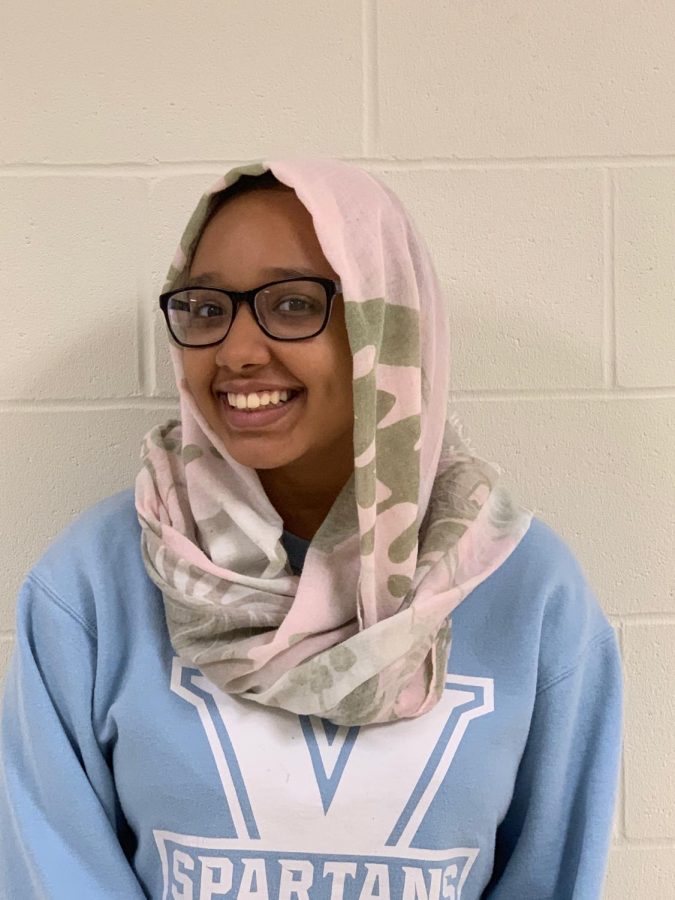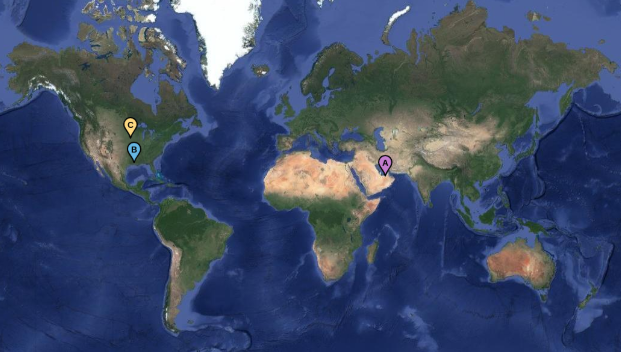It’s me, it’s who I am
The journey of self acceptance through a hijab
Back in Louisiana, Razan Babikir ‘22 would quietly mumble a response when people asked about her new hijab. Babikir was one of the few kids at her school that wore a hijab. Now if someone asks her about her hijab she can comfortably and confidently talk about what it means to her.
“Louisiana didn’t have that many people that were Muslim and wore hijabs,” Babikir said. By being one of the few people to wear a hijab she was tasked with answering everyone’s questions about it. “I remember [when] I came back to school, eighth grade, a lot of people would come up and [say] I remember seeing you last year and you didn’t wear this.”
Now that Babikir was of age, her mom had expected her to start wearing a hijab at all times when outside the house. This wasn’t new to Babikir, back in Abu Dhabi she had already been wearing a hijab for school, but Louisiana would be the first time she’d be the only one wearing it. By being the only person in school wearing a hijab, she was the only person her classmates could turn to if they wanted to learn more about it.
Babikir said “With the first few people that came up to me, I’d be like ’Yeah, it’s just a thing,’ just make a short explanation for it, ‘Oh, I have to wear it,’ and just move on.”
The questions themselves weren’t the main source of Babikir’s dislike towards her hijab, but were feeding into a greater fear: being singled out, a fear most teenagers deal with. In Babikir’s case, her hijab was what she felt was causing her to fit into this “other” category.
“[There’s] the Muslim person, or the girl that wears a hijab, and then there’s just a girl. So I feel like that’s what I wanted [to be] at first, just a normal person,” Babikir said.
Soon enough Babikir found herself laying on her bed, preparing for what she’ll say to the next person that comes her way with an array of questions.
“I realized I’m just cutting my answers short and not trying to explain myself to these people,” Babikir said, “I realized that they weren’t trying to make me explain myself, they were just trying to figure out what’s going on… I felt like, why not tell them? Maybe they’ll be more interested.”
And they were interested, as Babikir’s change of heart lead her friends to feel more compelled to learn more about not just her hijab but values and morals.
Looking back, Babikir feels as though when someone was asking her a question they’d just take whatever they’d get, because they could feel her not wanting to talk about it and dismissing them. Quite the contrast from the typical Babikir, as described by her close friend Ruba Ahmed ’22, “Razan has a special way of spreading her positive energy.”
Her classmates finally felt like they could ask her about her hijab, and Babikir felt like she could fully embrace herself. With time, love started blooming for the thing she adorned on her head everyday. The habit of constantly making sure she was wearing her head scarf slowly morphed into a morning ritual of sorts that she feels she can’t turn her back on.
“After I decided I wanted to wear it, that decision [made me feel like] if I take it off, it’s kind of like going backwards,” Babikir said.
Babikir’s younger sister, Rawan ‘25, also notices Razan’s confidence boost from that point forward and says Razan isn’t really the type to really care about people’s opinions on her.
“Instead of being like, ‘Oh yeah, I’m Muslim’, [when people ask], now I’m not mumbling it,” said Babikir, “Now if someone asks if I’m Muslim then I’ll be like, ‘Yeah, I am.’”
After moving schools to West there hasn’t been a single time Babikir has been questioned on her hijab, most likely due to the higher amount of Sudanese students at West, and although there were many obstacles Babikir had to face with wearing a hijab in Louisiana she’s grateful that she went through that experience and feels that it has helped grow the connection to her hijab.
“There’s a lot of Sudanese people here who just moved to America ,” said Babikir, “[If I had been living in Iowa] in the beginning when my mom told me to wear it (the hijab), I would’ve been more accepting of the idea, except I don’t know if I would’ve gotten the conviction I have [for it] now.”
Having to learn what it’s like to be different from others, and overcome that fear of isolation is what brought Babikir closer to her hijab. By learning to accept her hijab, Babikir learned how to accept herself.
“I guess I just realized that there is more than one version of a ‘normal person.’ The whole reason I refused to wear it was because I wanted to be ‘normal’ [by American standards.]” Babikir said, “After I opened up about it I realized that there is no such thing as a ‘normal person.’”
Babikir is not willing sacrifice her hijab, a symbol of her belief, for society.
“It’s me, it’s who I am.”


